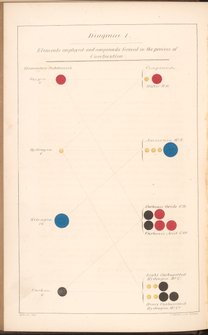John Mayow (1643–1679) was an early researcher of respiration and the nature of air. Mayow published tracts on respiration and rickets while studying at Oxford in 1668; in 1674 these were edited and reprinted with three other tracts (De sal-nitro et spiritu nitro-aereo, De respiratione foetus in utero et ovo, and De motu musculari et spiritibus animalibus) as Tractatus quinque medico-physici.
This work establishes a theory of combustion supported by thoroughly detailed experiments. Mayow concludes that air consists of at least two constituents, the "nitro-aerial" spirit, which supports combustion and respiration, and the "sal-nitro", an inert volume present after combustion or respiration. Despite preceding the discovery of oxygen by a century, Mayow provides a semi-accurate anatomical description of the mechanism of respiration.
Digitization includes the engraved frontispiece portrait of Mayow, the title page, and 6 folding copperplates.
Mayow, John. Tractatus Quinque Medico-Physici : Quorum Primus Agit De Sal-Nitro, Et Spiritu Nitro-Aereo. Secundus De Respiratione. Tertius De Respiratione Foetus in Utero, Et Ovo. Quartus De Motu Musculari, Et Spiritibus Animalibus. Ultimus De Rhachitide. Oxford, England: E Theatro Sheldoniano, 1674. https://digital.sciencehistory.org/works/a9ut8rx.
Export citation (RIS)
?
This citation is automatically generated and may contain errors.













